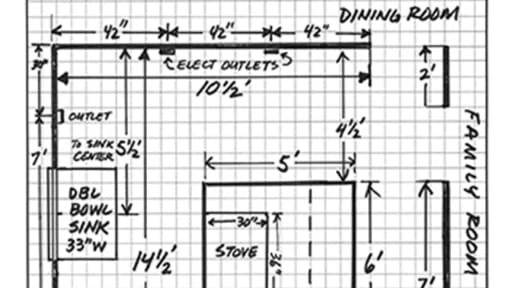How to Measure Your Kitchen for Cabinets
Posted by Michael H. on 7th Jun 2023

When planning for new kitchen cabinets, what do I need to measure? Follow the steps below to collect all necessary measurements.
Download Planning Grid or Download The Full Planning Guide
WHAT TO MEASURE?
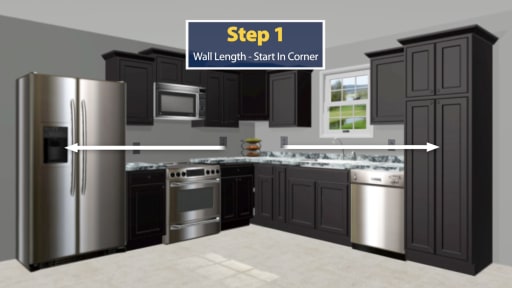
Taking measurements is the first step when planning for new kitchen cabinets. You need to see what space you have. This task requires a tape measure, a pencil, and some scratch paper or our free planning grid. Taking accurate measurements is very important for planning the exact cabinet sizes you will need for a successful kitchen remodel
STEP 1: What to measure first?
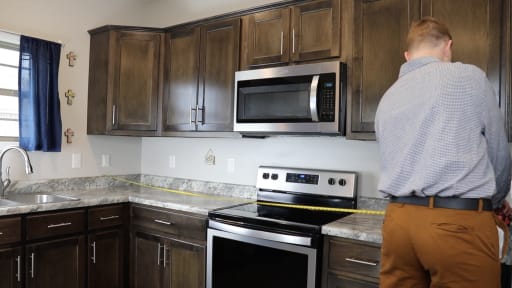
You want to measure the overall length of the wall, and write it down. If you’re using the grid we supplied, draw a line and mark the length of the walls.
Always start measuring your walls from an adjoining corner if possible. Measure from wall edge to wall edge, getting the total space, ignoring appliances, fixtures, and windows for the moment.
STEP 2: Measure the placement of appliances and windows.
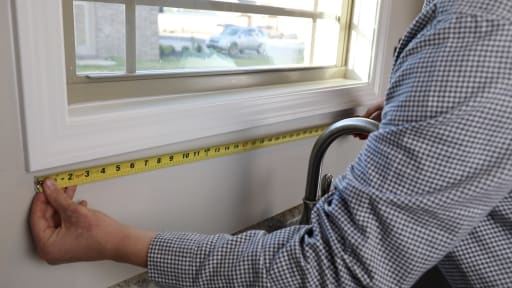
If there is a window you will be centering the sink on, measure from the wall edge to the casing of that window and note that on your grid. Then, measure the window from casing edge to casing edge, marking that and then take the measurement of the remainder of the wall. Measure and mark any other windows in the kitchen. Any appliances or fixtures that will not/cannot be moved, like a gas stove or an existing kitchen island, should be marked on the layout as well.
STEP 3: Note the location of fixtures.

Clearly mark where all electrical, plumbing, and vents are located. They can all be moved to fit your remodeled layout during the construction phase.
STEP 4: Measure kitchen wall heights.
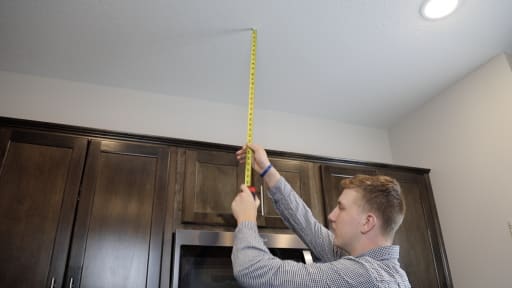
(Be sure to measure accurately, if not accurate the cabinets you get may not fit correctly.)
Take the tape measure to get the distance from the floor to the ceiling at each corner and the middle of each wall and make note of that on the sheet. Knowing this will allow you to choose the proper height of your wall cabinets, based on the countertop clearance and if the cabinets will have any space below the ceiling or go all the way up.
These measurements will also let you know if any major settling of the house may have happened. Make note of any soffits, recessed ceilings or any other feature existing in the room that could impact the height of the wall cabinets.
Conclusion
If you need help planning your kitchen, we have experts who will layout your plans for free. Follow the instructions on the page and start the planning process. Depending on when you submit your info, one of our partners should be in contact within 48 hours, often within the same day. Home Outlet will be there to help you realize your dream kitchen at the guaranteed lowest price from the cabinets, to the counter tops, backsplash, faucet, kitchen sink and more.
Additional Information To Help Plan Your New Kitchen
A few kitchen cabinet basics to help plan out your new kitchen layout: There are 3 basic types of cabinets;
- Base cabinets (the lower ones): Standard Base cabinets are 24” deep (out from the wall) and 34-1/2” in height (so with a 1-1/2” counter top the height is 36”) and have a 3” inset for the toe kick at the bottom. Vanity Base cabinets are 21” deep and either 30-1/2” or 34-1/2” tall; so named because they were often used as bath vanities. These shallower base cabs are useful if you are tight on space or want to make a kitchen island with a smaller foot print.
- Wall cabinets (the upper ones): These are 12” deep and can come in heights of 30”, 36” or 42”. The reason for the variants in cabinet height is that ceiling heights vary and some people like to have the upper cabinets go up to the ceiling, while others leave space at the tops of the cabinets, or want to install crown molding. When determining the height of the wall cabinets you will want to make sure there is 18” to 20” of clearance between the countertop and the bottom of the upper cabinets.
- Pantry cabinets (the tall ones): Typical pantries come in 84”, 90” or 96” heights and are 24” deep. These units are great for flexible storage because of the volume of goods they can hold and many come with adjustable shelves.
Obviously the widths of cabinets vary greatly from 9” to as wide as 60”, depending of the purpose of the unit. Getting the most accurate measurements allows you to know exactly what combination will perfectly fill the space and efficiently place appliances.

